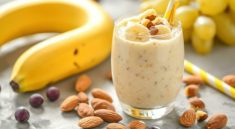Pilates Pila – Strength, Balance, Wellness highlights how healthy snacks for Pilates can maintain energy, support core strength, and speed up recovery for busy students.
Why Healthy Snacks for Pilates Matter
Many Pilates students rush between classes, work, and errands without planning what they eat. Healthy snacks for Pilates help stabilize blood sugar, reduce fatigue, and prevent dizzy spells during intense core work.
In addition, the right snack supports muscle repair after challenging sessions. Protein, fiber, and healthy fats play a key role in keeping you full longer. Healthy snacks for Pilates also reduce cravings for sugary foods later in the day.
Meanwhile, portion control remains important. Too much food before class can cause discomfort during roll-ups and teasers. However, a small, balanced snack 60–90 minutes before training can improve concentration and performance.
Ideal Timing for Healthy Snacks
Timing can turn healthy snacks for Pilates into real performance boosters. A light snack before class fuels movement without making you feel heavy. A post-class snack supports muscle recovery and rehydration.
About one to two hours before class, choose something rich in complex carbohydrates and a bit of protein. After that, drink water steadily instead of chugging a large bottle at once. As a result, your body feels prepared, not bloated.
After class, healthy snacks for Pilates should include protein for muscle repair and some carbs to refill glycogen stores. A balanced choice here can reduce soreness and help you feel ready for the next session.
Greek Yogurt with Fruit and Nuts
Greek yogurt paired with berries and a sprinkle of nuts is one of the most practical healthy snacks for Pilates. Protein from yogurt supports muscle maintenance, while berries add antioxidants and light sweetness.
Nuts provide healthy fats and crunch, keeping you satisfied without a large portion. On the other hand, avoid flavored yogurts high in added sugar. Choose plain yogurt and sweeten with fruit and a dash of honey if necessary.
Whole-Grain Toast with Nut Butter
Whole-grain toast with almond or peanut butter gives long-lasting energy and solid satiety. Many instructors recommend this as one of the best healthy snacks for Pilates before a morning class.
The complex carbs from whole grains support steady energy release. The nut butter adds protein and healthy fats. Nevertheless, stick to thin spreads if your class involves many inversions or deep core flexion.
Veggie Sticks with Hummus
Colorful vegetable sticks with hummus offer crunch, fiber, and plant-based protein. These healthy snacks for Pilates work well when you want something light that will not sit heavily in the stomach.
Carrot, cucumber, bell pepper, and celery pair well with hummus. Because they are low in calories but high in volume, they keep you feeling satisfied. Additionally, hummus contains healthy fats that help stabilize energy.
Energy-Boosting Smoothies
A carefully designed smoothie can be one of the most convenient healthy snacks for Pilates, especially for students rushing from the office. Blend fruit, leafy greens, a protein source, and liquid for a balanced drink.
For example, combine banana, spinach, Greek yogurt, and unsweetened almond milk. This mix delivers potassium, protein, fiber, and hydration. However, avoid loading smoothies with sugary juices or sweetened yogurts.
Read More: 26 nutritious foods that support muscle building and recovery
Trail Mix with Smart Portions
Trail mix can be one of the most portable healthy snacks for Pilates when portioned correctly. A mix of nuts, seeds, and a few dried fruits offers protein, fiber, and minerals like magnesium.
Because trail mix is calorie-dense, measure a small handful into a container before leaving home. This prevents mindless snacking after class. On the other hand, skip mixes loaded with candy or yogurt-covered pieces.
Rice Cakes with Toppings
Rice cakes topped with avocado, hummus, or cottage cheese become versatile healthy snacks for Pilates. They are light enough to eat closer to class time without feeling weighed down.
Avocado adds healthy fats and creaminess, while cottage cheese increases protein. Because rice cakes themselves are low in fiber, pair them with toppings that add more nutrients and staying power.
Portable Fruit and Cheese Pairings
Apples, pears, or grapes with small cheese portions make satisfying and quick healthy snacks for Pilates. The fruit provides natural sugars and hydration, while cheese offers protein and fat.
This combination stabilizes blood sugar and prevents energy crashes. However, keep cheese portions small if you are sensitive to dairy before exercise. Test it on a lighter training day first.
Protein-Rich Snack Bars
High-quality protein bars can function as backup healthy snacks for Pilates when you have no time to prepare food. Look for bars with recognizable ingredients, moderate sugar, and at least ten grams of protein.
As a result, you can support muscle repair without relying on vending machine options. On the other hand, do not treat bars as meal replacements every day. Whole foods should remain your primary source of nutrients.
Many studios also sell bars at the front desk. Healthy snacks for Pilates placed near the check-in area can remind students to refuel properly after class.
Hydration and Electrolytes to Support Snacking
Hydration often matters as much as food for active students. Healthy snacks for Pilates work best alongside regular water intake and, when needed, light electrolytes.
Sipping water during the day keeps muscles functioning smoothly, reducing cramps during leg circles or bridges. Add a pinch of sea salt and lemon to water for a simple homemade electrolyte drink if you sweat heavily.
Avoid sugary sports drinks unless your class is very intense or long. In many cases, water combined with balanced snacks is enough to maintain performance and focus.
Practical Planning Tips for Busy Students
Preparation turns theory into action. Healthy snacks for Pilates are easier to maintain when you set aside a few minutes each week to plan. Make a shopping list that includes yogurt, nuts, fresh fruit, vegetables, and whole grains.
After that, pre-portion snacks into small containers or bags so they are ready when you grab your mat. Keep a labeled box in your fridge or pantry for “class snacks” only. This simple system limits last-minute unhealthy choices.
Consider bookmarking this guide to healthy snacks for Pilates so you can revisit ideas whenever you update your routine.
Building Long-Term Habits Around Snacking and Pilates
Healthy snacks for Pilates support more than one workout; they shape long-term energy, mood, and consistency. When you fuel your body with intention, you handle challenging sequences with greater control and enjoyment.
Over time, these snack habits can reduce afternoon crashes, improve sleep, and stabilize appetite. Because your body receives steady nourishment, you rely less on quick fixes like sugary drinks.
Healthy snacks for Pilates also encourage mindfulness. Each choice becomes a reminder that your practice extends beyond the studio and into daily life. By respecting your body’s needs before and after class, you build a sustainable approach to movement, strength, and health supported by consistent, thoughtful nutrition.



